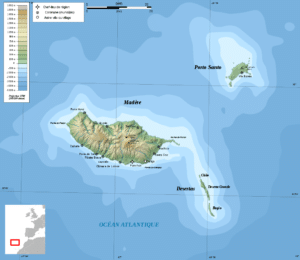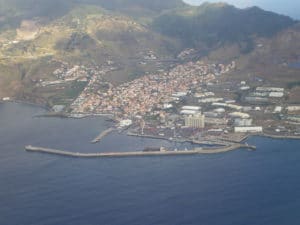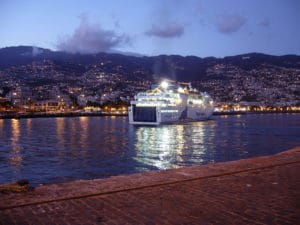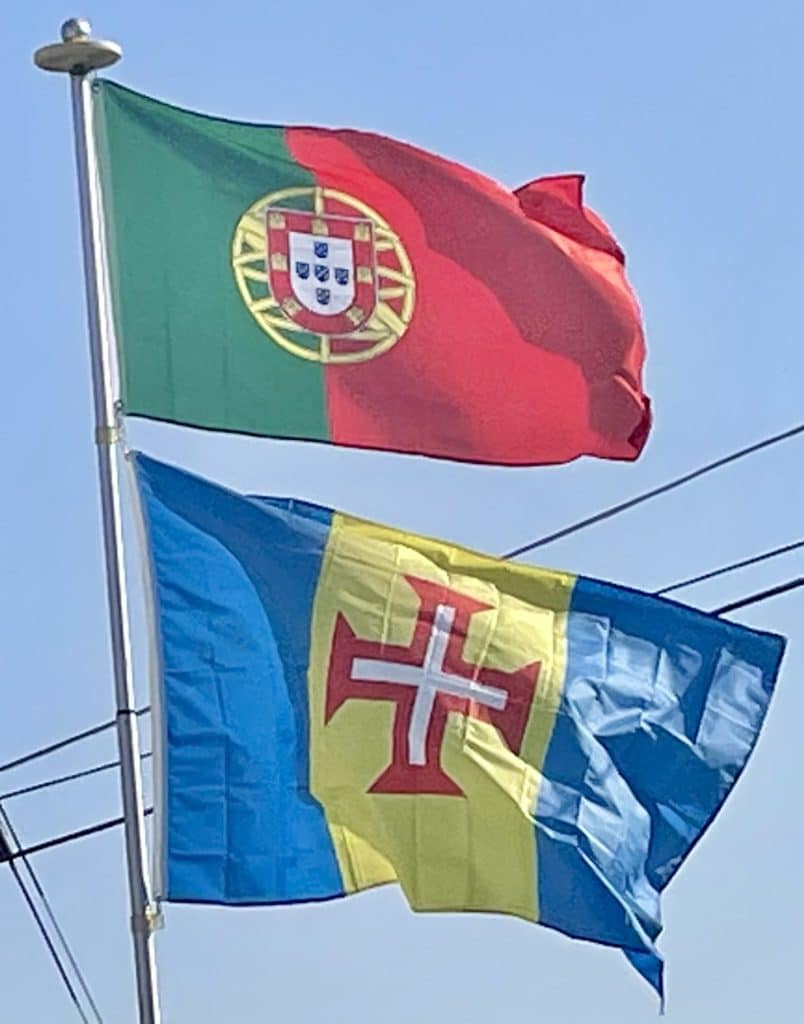
The two archipelagos are the only land in the Atlantic on the 32nd parallel north.
Islands and islets:
- Madeira (740.7 km2), including Ilhéu de Agostinho, Ilhéu de São Lourenço, Ilhéu Mole (northwest); Total population: 262,456 (2011 Census).
- Porto Santo (42.5 km2), including Ilhéu de Baixo ou da Cal, Ilhéu de Ferro, Ilhéu das Cenouras, Ilhéu de Fora, Ilhéu de Cima; Total population: 5,483 (2011 Census).
- Desertas Islands (14.2 km2), including the three uninhabited islands: Deserta Grande Island, Bugio Island and Ilhéu de Chão.
- Savage Islands (3.6 km2), archipelago 280 km south-southeast of Madeira Island including three main islands and 16 uninhabited islets in two groups: the Northwest Group (Selvagem Grande Island, Ilhéu de Palheiro da Terra, Ilhéu de Palheiro do Mar) and the Southeast Group (Selvagem Pequena Island, Ilhéu Grande, Ilhéu Sul, Ilhéu Pequeno, Ilhéu Fora, Ilhéu Alto, Ilhéu Comprido, Ilhéu Redondo, Ilhéu Norte).
The island of Madeira is at the top of a massive shield volcano that rises about 6 km (20,000 ft) from the floor of the Atlantic Ocean, on the Tore underwater mountain range.
Economy:
The Gross Domestic Product (GDP) of the region was 4.9 billion euros in 2018, accounting for 2.4% of Portugal’s economic output.
The setting-up of a free trade zone, also known as the Madeira International Business Center (MIBC) has led to the installation, under more favorable conditions, of infrastructure, production shops and essential services for small and medium-sized industrial enterprises.

Tourism is an important sector in the region’s economy, contributing 20% to the region’s GDP, providing support throughout the year for commercial, transport and other activities and constituting a significant market for local products. The island of Porto Santo, with its 9-kilometre-long (5.6 mi) beach and its climate, is entirely devoted to tourism.
Visitors are mainly from the European Union, with German, British, Scandinavian and Portuguese tourists providing the main contingents.
Transportation:
The islands have two airports, Cristiano Ronaldo International Airport and Porto Santo Airport, on the islands of Madeira and Porto Santo respectively. From Cristiano Ronaldo International Airport the most frequent flights are to Lisbon. There are also direct flights to over 30 other airports in Europe and nearby islands.

Transport between the two main islands is by plane, or ferries from the Porto Santo Line, the latter also carrying vehicles. Visiting the interior of the islands is now easy thanks to construction of the Vias Rápidas, major roads that cross the island. Modern roads reach all points of interest on the islands.
Funchal has an extensive public transportation system. Bus companies, including Horários do Funchal, which has been operating for over a hundred years, have regularly scheduled routes to all points of interest on the island.
Flag of Madeira:
The flag of Autonomous Region of Madeira consists of a blue-gold-blue vertical triband with a Cross of Christ in the center.
